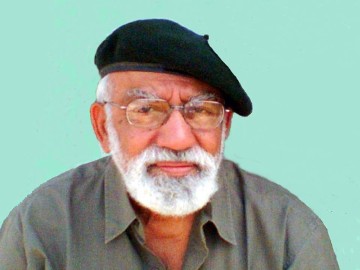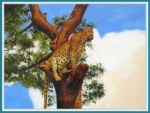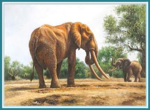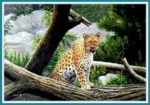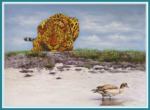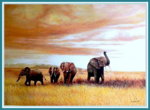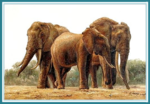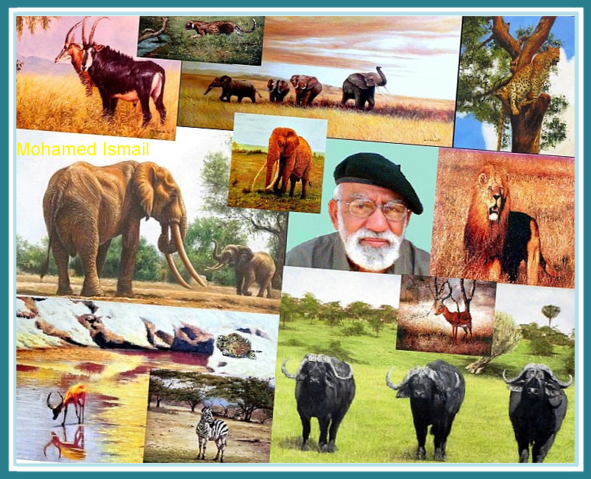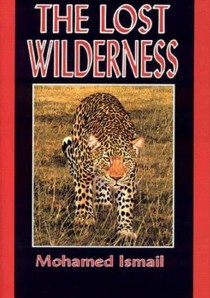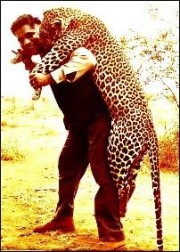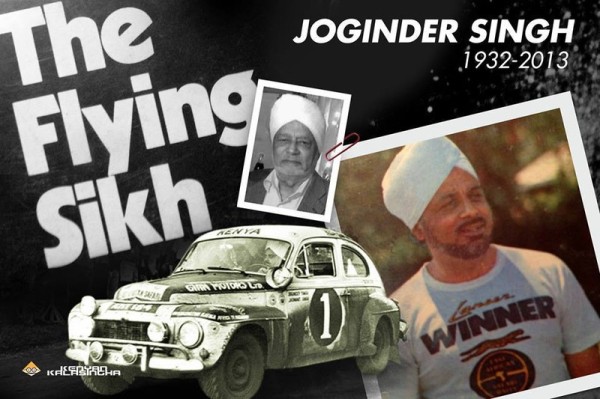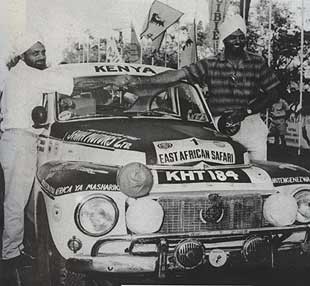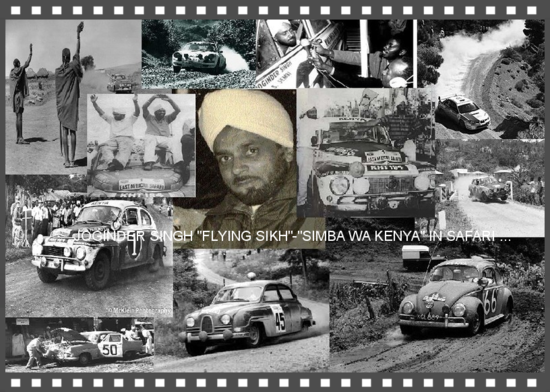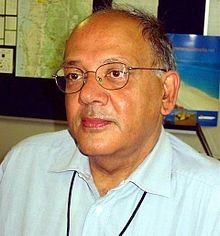Tributes given are not in any order
Click on Photo
Mohamed Ismail: An Artist’ Life And A 'Lost Wilderness'
REMINISCES FROM CAHIL MADUFF
Coastweek -- More than four decades ago Mohamed Ismail was then an adventure traveller ranging far and wide across the globe.
Later it became difficult, as he had young children to care for and therefore compelled to come back to Kenya and to operate mainly within East Africa and within reach of his family.
Now that his children have come of age, he has again started his global travels.
A few months ago he was in several U.S. states from Minnesota, South Dakota through to Arizona.
Former wildlife conservationists including Tom Gilbert, Anno Hecker, Dave King, Patrick Hemingway and Frank Poppleton have been his friends since the 1960’s and they have kept their friendship alive over all these years.
Cont: http://www.coastweek.com/artscene/art3424-cahil.htm
» Safaris to the last frontier with Explorers' Africa
Experience East Africa in ways you never dreamed possible! Travel with the Internationally renowned wildlife artist / photographer, and former Kenya Game Warden, Ismail, to places of which most people have never even heard of. Savour the magnificence of southern Tanzania in the wild beauty of the Selous Game Reserve and the pristine and savage splendour of Ruaha National Park.
CARLOS DA CRUZ - HUNTER AND ANIMAL SCULPTOR
AUGUST 28TH, 1931 - MAY 17TH, 2006
.
Coastweek - - Carlos da Cruz was no ordinary human being, and when he died his death robbed us of an exceptional being.
His exit, albeit expected, left a permanent void in our lives.
He was a physically powerful man, who exuded warmth, friendship charisma and an aura of invincibility.
Yet, after four months and eleven days in a comatose condition, he lost the will to go on fighting for his life.
He died in the province of Murcia, Lorca, Spain at 9.30 a.m. on May 17th.
Cont:
http://www.coastweek.com/obit/obit-14.htm
Click on Photo
THE FLYING SIKH - 'SIMBA YA KENYA'
JOGINDER SINGH
If anyone in East Africa achieved the status of a national hero
through motor rallying, it was undoubtedly Joginder Singh. He was not only the first Asian driver ever to win an international rally but also the first man to win the Safari three times. His tally of
19 finishes in 22 Safari starts is unique: a record of consistency in 'the world's toughest rally' that will probably never be beaten.
Sardar Joginder Singh Bhachu was born on 9th February 1932 at Kericho in Kenyan in the western highlands. His father Sardar Battan Singh came to Kenya in the 1920's from Village Kandola Kalan, near
NurMahal in the district of Jullundur, Punjab. His mother's name was Sardarni Swaran Kaur. Joginder Singh was the eldest of eight sons and two sisters and was educated at a boarding school at
Nairobi. But engineering was already in his blood as he was able to drive an old 1930s Chevrolet by the time he was 13.
He worked as a spanner boy in his father's garage and later moved onto work with larger motor companies and in 1958 became the first patrolman for the Royal East African Automobile Association armed
with a fearsome 650cc BSA motorcycle and sidecar. Upto the age of 26 he had no experience of motor sport. His father was a fast car driver, perhaps some of that had rubbed off on his son but it was
probably Joginder Singh's mechanical sympathy and meticulous car preparation that were to have the biggest influence on his future rally career.
HIGHLIGHTS OF RALLEY ACHIEVEMENTS OF S JOGINDER SINGH BHACHU East African Rally Champion:
1965 1970 & 1975 Kenyan Rally Champion:
1966 1967 1969 1970 & 1975
Motor Sportsman of Year:
1970 & 1976
Won over 60 East African Championship
Rallies in Kenya, Uganda and Tanzania.
Southern Cross Australia:
5th (1970) 4th (1973) 2nd (1974)
overall in Mitubishi
Acropolis Rally Greece:
9th (1966) overall in Volvo
The 13th Safari certainly wasn't unlicky for the Sikh brothers
Joginder & Jaswant. They won the event in a second hand Vplvo PV544 that already had many thousands of miles on the clock. The first ever international rally success by a non-European crew. (The
13th safari had car no. 184 (total 13) PV544 (total 13) - Unlucky for some BUT LUCKY for the Bhachu brothers)
Here is what one paper wrote of the incredible victory:
VOLVO PV544
The PV went from strength to strength, winning our own RAC rally, in probably the fastest Volvo driver Tom Trana's hands in 1963 and 1964. It was a bit outdated, as a rally car by then but in the correct hands was still a winner on rough, tough, loose surface events. The best PV story of all I think is of Joginder and his brother Jaswant Singh's 1965 East Coronation Safari win. Volvo had taken four cars to Kenya in 1964 for tracks. It was accepted as the hardest event in the calendar. The cars arrived too late that year and could not be tested under African conditions and for a variety of reasons they all failed to finish. Volvo did not take all the cars back to Sweden with them but left one for Joginder Singh to rally in Africa for the rest of the year. During this time he modified the PV and strengthened it where necessary and lowered the axle ratio. The car had covered 42,000 miles mostly under rally conditions. Joginder's intention was to enter the 1965 Safari Rally. The story has a fairy tale ending, they won by 100 minutes.
You can perhaps imagine the headlines in the papers - "Safari won in a second hand car." Joginder won again, but not in a Volvo, in 1974 and 1976 just to show that the driver had a
fair bit to do with the result. Any of you lucky enough to attend a PV Register meeting a few years ago at the Shuttle worth Trust in Bedfordshire would have been able to see Joginder and his beloved
PV (KHT 184) now immaculate in its original white paint.
I just wonder if any of the old works cars are still in existence and just what modifications the factory used in those no holds barred Group 6 events like the Alpine and Liege. The 1961 Homologation papers show four wheel disc brakes as well as the Joginder Singh inspired four damper front suspension set up. Did they ever use two twin choke Weber or Solex carburetors as offered by the Volvo R Sport in any events? It would not surprise me and I would love to know. I list below the production records and model changes - these taken and other material from Andrew Whyte s book the "Volvo 1800 and Family."
Shekhar Mehta
Shekhar Mehta
In his prime, Shekhar Mehta was one of the best rally drivers in the world and was the most famous Kenyan sportsman of the early to mid 80s. A five time winner of the Safari Rally.
As of 2011, Rally driving is no longer a big event in Kenya. But during the 1960s, 70s and 80s, the Safari rally was the largest annual sporting event in Kenya. To begin with it was part of the world rally championships which means the best rally drivers from all over the world came to Kenya to compete in the Safari rally. Not only that but the Safari rally was televised all over the world, not just in Kenya. As a result, the entire country was consumed with watching the rally cars criss-cross the dirt roads all over the country. Virtually every Kenyan followed the cars on radio, on television and in the newspapers.
Many kept score-cards and followed the rally closely as they watched and hoped that Kenyan drivers could compete against the big time drivers from Europe.
It was against this backdrop of global competition that Shekhar Mehta arose. Mehta went on to win the Safari rally 5 times, each time leaving the mighty European drivers in his wake.
Chandrashekhar ‘Shekhar’ Mehta was born in Uganda on 20th June 1945. He spent his early years on his family’s tea and sugar plantations, then was shipped off to Europe for schooling. He returned to Uganda to work in the family business in 1965. He started rallying at age 21.
His first rally was the Nile rally in which he drove a BMW 1800. His first big win came in 1971 when he won the East African rally while driving a Datsun 240Z. Indeed Mehta drove Datsun’s throughout his career. In 1972 , Mehta immigrated into Kenya from Uganda as part of the great Asian immigration when Iddi Amin ejected all Asians. Uganda’s loss was Kenya’s gain.
Mehta first won the Safari rally in 1973 driving a Datsun 240Z along with co driver Lofty Drews. He finished only 1 minute ahead of Swede Harry Kallstrom. It was the closest margin of victory in Safari rally history. In 1976, Mehta won the Cyprus Rally. And in 1981, he won the inaugural Africa rally.
The Shekhar Mehta dynasty of the Safari rally started in 1979 when he won by a massive 48 minutes while driving a Datsun Violet. In 1980 he won, finishing 30 minutes ahead of team-mate Rauno Altonen from Finland. Mehta then completed a hat-trick by controversially winning the 1981 Safari rally amid bad blood between he and team-mate Rauno Altonen.
Altonen had appealed and was originally awarded the win, only for the decision to be reversed. In 1982, Altonen had left the Nissan team to join Opel. A fierce rivalry developed between him and Mehta. However mechanical problems spoiled Altonen’s chances leaving Mehta an easy path to victory. It was Mehta’s last win in the event. Nissan/Datsun had dominated the rally for years. But in 1983 they were left behind technology wise by manufacturers like Audi and Toyota. Mehta could not match the firepower of drivers like Hannu Mikkola and Bjorn Waldeegard.
Cont: http://kenyapage.net/commentary/uncategorized/shekhar-mehta-2/
More: http://en.wikipedia.org/wiki/Shekhar_Mehta


